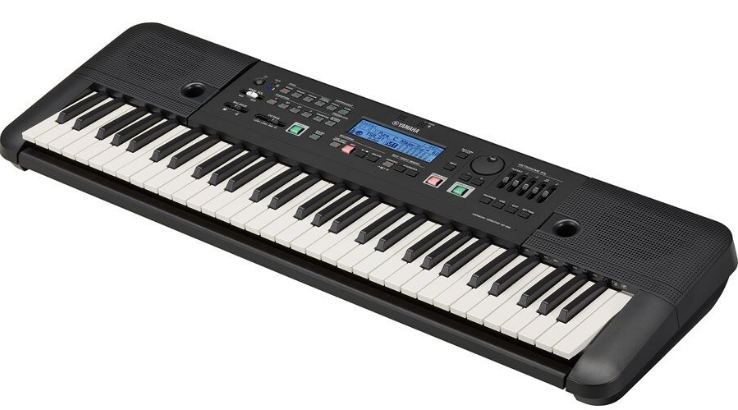Yamaha HD-300 Harmony Director Brass and Woodwinds Musical Instruments User Guide



Introduction
Th e Harmony Director HD-300 is packed with features that help a performer actively improve his or her abilities through independent and interactive learning. We hope that the act of listening back, reflecting on, and correcting one’s performance not only helps improve one’s abilities as a performer by internalizing what you have learned, but also offers new opportunities to enjoy music and helps provide a sense of enrichment. Th is Use Guide describes the kinds of independent and interactive learning that can be incorporated into practice, and the kinds of band practice and instruction that is possible with the HD-300 using specific examples of each scene.
Training one’s ability for listening and matching pitch (Sound Back* function)
Use the Sound Back function to listen and compare the performer’s tone and that of the HD-300. Use this to practice matching the pitch, training your listening and pitch recognition abilities in the process.
Practice using the Sound Back function
- Scene: Individual practice, part practice
- practice goals: Develop the ability to match pitch by listening to the (surrounding) instruments without relying on a tuner.
Training one’s ability to recognize areas needing improvement in a performance, or capturing and sharing a performance in its entirety (Recording function)
Listening to one’s performance objectively can provide new insight. Share new facets noticed with your peers to help deepen your understanding of your own performing abilities.
Practice using the Recording function
- Scene: Part practice, ensemble practice
- Practice goals: Develop one’s ability to analyze one’s performance objectively and to play towards a goal based on grounds.
Advanced
Quickly present points of concern (Time Shift Recording function)
You can record a part of concern during performance after when you have noticed it, starting at up to 10 seconds before. Facilitate efficient practice and develop each performer’s ability to play by themselves, by quickly recording and sharing parts that require additional instruction with them.
Practice using Time Shift Recording
- Scene: Part practice, ensemble practice Case 1: Ensemble practice
- Practice goals: Quickly present points of concern to the practice partner to help facilitate practice.
Introducing the “HD-300 Assistant” app for iOS
This is a useful iOS app that aids your daily practice routine. You can use this app to remotely control certain functions of the HD-300 by connecting to the HD-300 via Bluetooth®. This app also includes dedicated features for app, such as a chord detector, a tuner, and others. *HD-300 Assistant is an app exclusive to the iPhone/iPad.
Harmony Director HD-300 Feature Basics
This at-a-glance introduction shows how the HD-300 features can be used in various practice situations, and provides basic instructions.
Tuning
- Use the voice buttons and the dial to select the desired Voice.
- Use the HOLD unction to continue playing notes even after you’ve released your finger from the keyboard.
- Use the OCTAVE slider to change the octave of he keyboard sound.
Imagining correct pitch
Turn the SOUND BACK function on, and then play in the direction of the HD-300 to have it play the correct pitch for the nearest reference note for a specific period of time. This lets you practice imagining and matching the pitch as you perform.
- Use Guide: A. Training one’s ability for listening and matching pitch
- Owner’s Manual (page 29)
Creating harmonies
Select the pur TEMPERe aAMENT nd play a chord so that the root key is automatically detected and a pure-tempered chord sound is produced. The TRe bANSPOSE uttons are useful when playing the keyboard, while using a musical score written for the transposing instrument.
Sharing performances
Your performance can be recorded to a USB flash drive.
the REC button is used for normal recording. While the function is on, you can record a performance including even up to 10 seconds before you start the recording.
Demonstrating tempo and beat
Using the metronome in its simple mode. Use the [START/STOP] button to start/stop playback.
- BEAT: : Changes the time signature.
- TEMPO/TAP: : Changes the tempo.
- METRONOME VOL: The sliders adjust the volume of each note type of the metronome.
Effectively practicing basic techniques
In th TRe AINING mode, you can play back the main practice pieces in the “JBC Band Method” library. This can be used to automate the accompaniment, allowing the instructor to concentrate on listening to the student’s performance when used by the instructor. It also helps students practice independently on their own when they use it.
Confirming complex rhythms
Using the metronome function deeper. By using th BEAe fT•TEMPO MEMORY unction, you can set and save an irregular meter or a frequently used tempo. enables you to create a set of rhythms of up to 2 measures by note input, and to play it on the HD-300.
Developing one’s sense of rhythm
By switching the rhythm playback mode to the RHYTHM S TYLE mode from the metronome, you can play back various popular rhythms. Rhythm styles include such as march, swing and samba. Practicing while playing back these rhythms helps develop a sense of rhythm that matches the piece.